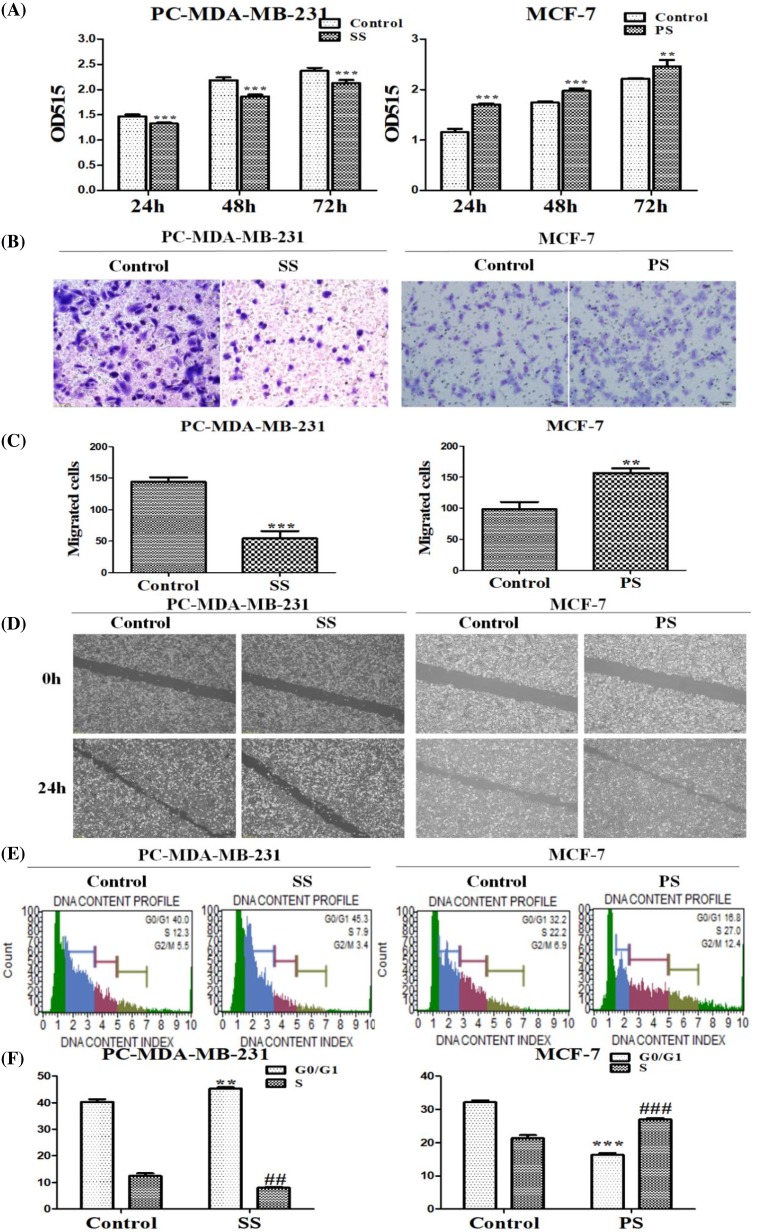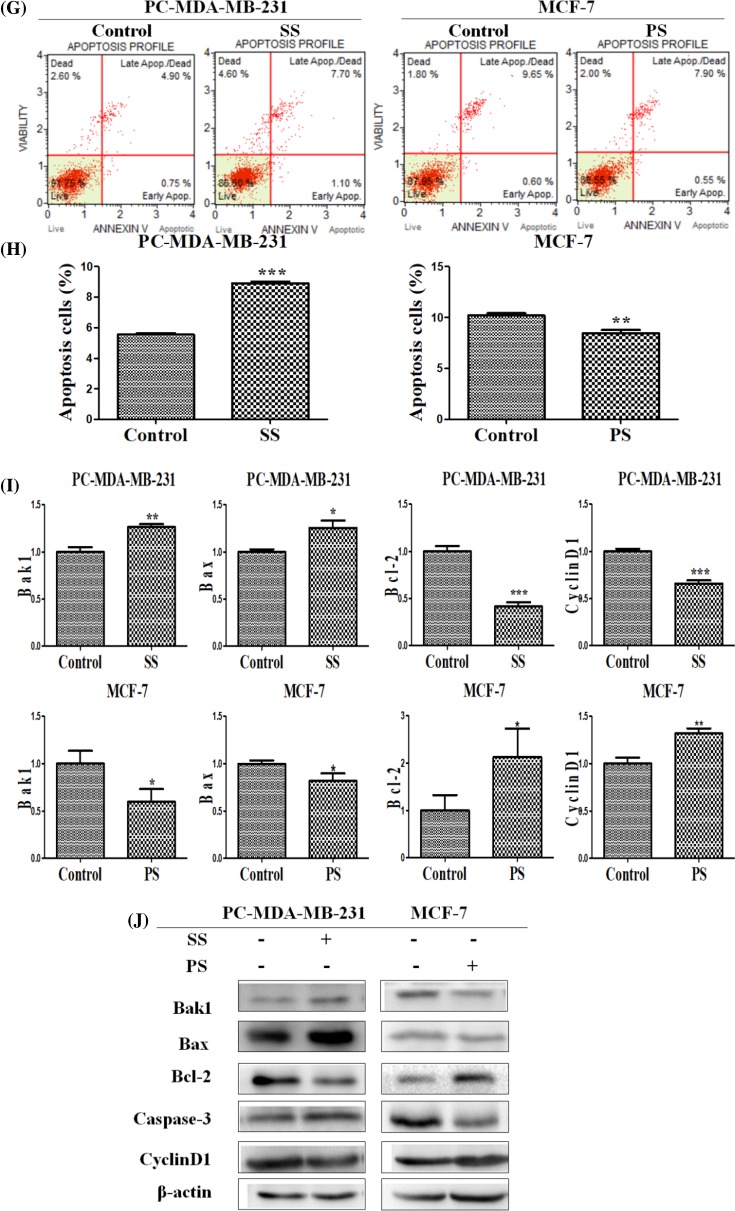Figure 3. Effects of SPRY4- IT1 on cell proliferation, migration, invasion, cell cycle, and apoptosis in breast cancer cells.
(A) The influence of depletion or overexpression of SPRY4-IT1 on cell proliferation in pcDNA-CXCR4-MDA-MB-231 cells and MCF-7 cells was measured by SRB assays. (B) Representative images indicated the invading cells with down-regulated or up-regulated SPRY4-IT1 analyzed by Transwell assay. Scale bar: 50 μm. Data are mean ± S.D. of five fields. (C) Quantitative results are illustrated for (B). (D) The influence of depletion or overexpression of SPRY4-IT1 on cell migration in breast cancer cells was measured by wound healing assays. (E) Effects of SPRY4-IT1 on cell cycle in breast cancer cells. The influence of depletion or overexpression of SPRY4-IT1 on cell cycle was analyzed by propidium iodide staining and flow cytometry. Bar plots illustrating the percentage of G0/G1 and S phase in breast cancer cells with down-regulated or up-regulated SPRY4-IT1. (F) Quantitative results are illustrated for (E). (G) Effects of SPRY4-IT1 on apoptosis in breast cancer cells. The influence of depletion or overexpression of SPRY4-IT1 on cell apoptosis was evaluated by AnnexinV/PI staining and flow cytometry. (H) Bar plots illustrate the percentage of apoptosis cells in breast cancer cells with down-regulated or up-regulated SPRY4-IT1. (I) Effects of SPRY4-IT1 on cell cycle and apoptosis related factors in breast cancer cells. The influence of depletion or overexpression of SPRY4-IT1 on the mRNA level of cell cycle and apoptosis related factors was analyzed by qRT-PCR. (J) Western blot analyzed the protein level of cell cycle and apoptosis related factors in breast cancer cells with down-regulated or up-regulated SPRY4-IT1.
Data were presented as mean ± S.D. of three independent experiments. *P or **P<0.05, ***P<0.01. ##P<0.05 or ###P<0.01 vs control group. ‘SS’ is short for ‘si-SPRY4-IT1-3’, ‘PS’ is short for ‘pcDNA-SPRY4-IT1-3’.


